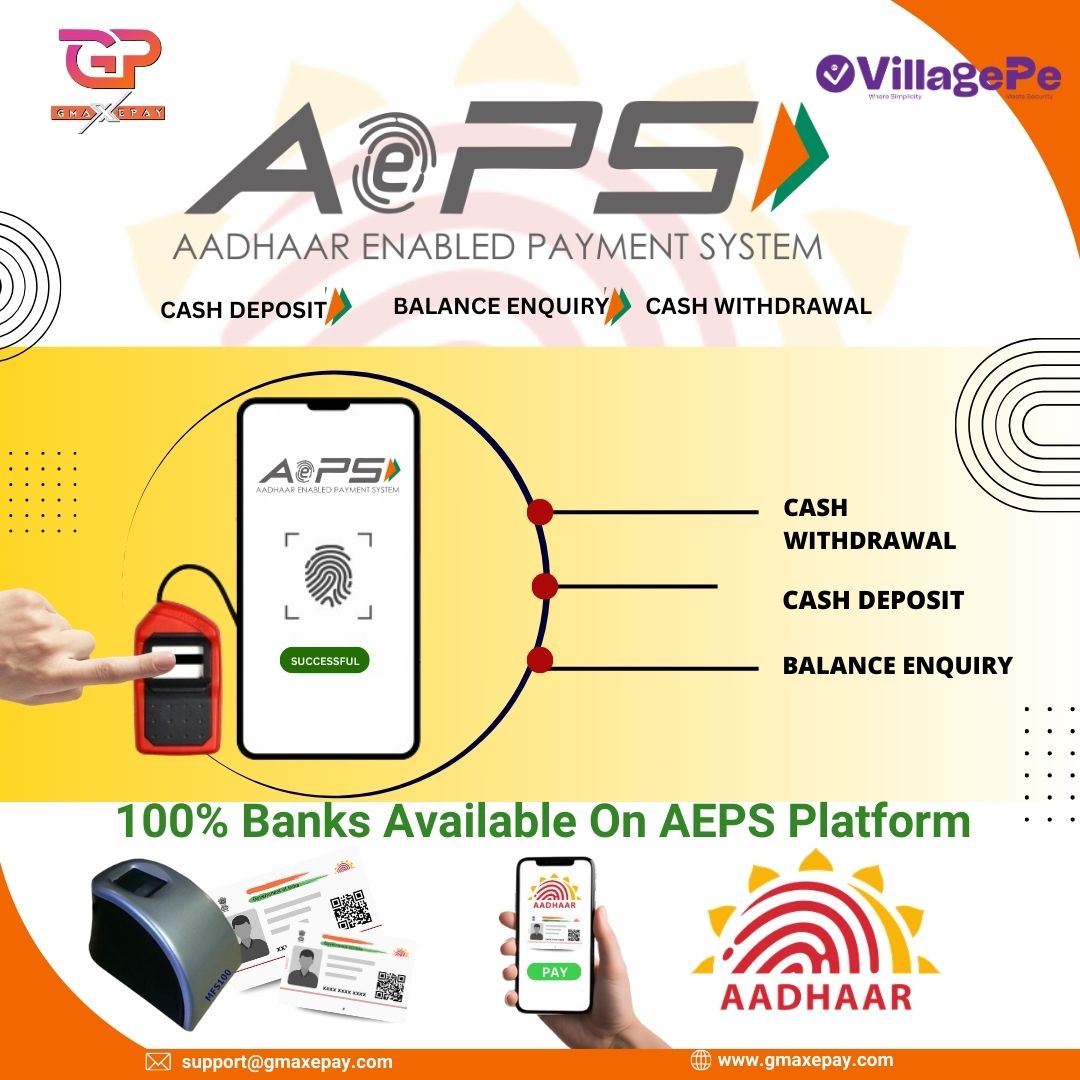How to Disable AEPS Service: A Step-by-Step Guide
The Aadhaar Enabled Payment System (AEPS) is a financial service introduced by the Government of India to allow banking transactions through Aadhaar-based authentication. AEPS empowers customers to carry out banking transactions like cash withdrawals, deposits, and balance inquiries, simply using their Aadhaar number and biometric authentication, without requiring traditional card or pin-based systems. While this system is useful in enhancing financial inclusion in rural areas and making banking more accessible, some individuals might want to disable AEPS services due to privacy concerns, security reasons, or personal preferences.
In this blog, we will explore the reasons why someone might want to disable AEPS services, the risks associated with it, and provide a step-by-step guide on how to disable AEPS services.
What is AEPS?
Before diving into how to disable AEPS services, let’s briefly discuss what AEPS is. Launched by the National Payments Corporation of India (NPCI), AEPS enables a person to carry out banking transactions at any Micro-ATM or Point of Sale (PoS) terminal through Aadhaar-based authentication.
The main advantage of AEPS is that it facilitates financial inclusion by offering banking services to individuals in rural and remote areas who might not have access to traditional banking infrastructure.
AEPS allows the following transactions:
- Balance Inquiry
- Cash Withdrawal
- Cash Deposit
- Aadhaar-to-Aadhaar Fund Transfer
- Mini Statement
Although the system offers many conveniences, it also raises concerns about security and data privacy. The widespread use of Aadhaar in financial transactions increases the risk of misuse or fraud if someone compromises an individual’s Aadhaar number or biometric data.
Why Disable AEPS Services?
- Privacy Concerns: The biggest concern surrounding AEPS is related to privacy. Since AEPS relies on Aadhaar-based authentication, it involves sharing sensitive personal data, including biometric information like fingerprints. In the digital age, data breaches and identity theft are significant risks. Some people may not feel comfortable exposing their Aadhaar details and biometric information to third parties, including Micro-ATM operators.
- Fraud and Security Risks: AEPS, like any other digital service, is susceptible to fraud. If someone gains unauthorized access to your Aadhaar number and biometric data, they could potentially withdraw funds from your bank account. Though AEPS systems are designed with security measures in place, no system is entirely immune to exploitation. Some users may prefer to opt out of AEPS services to reduce their exposure to potential fraud.
- Limited Control: Another reason for disabling AEPS is the lack of control users feel over how their Aadhaar data is being used. With AEPS enabled, anyone with access to a Micro-ATM and a simple fingerprint scanner can potentially access your account. Many users may feel that traditional banking methods like debit cards and net banking provide better control and security compared to AEPS.
- Low Usage: In some cases, users may have signed up for AEPS without realizing they would not actually use the service. If you do not use AEPS often or have access to more secure forms of banking, disabling AEPS might make sense.
How to Disable AEPS Service: Step-by-Step Guide
Disabling AEPS services is a relatively straightforward process. Follow the steps below to deactivate AEPS for your account:
1. Visit Your Bank Branch
The first step to disable AEPS services is to visit the branch of the bank where you have your Aadhaar-linked account. Bring your Aadhaar card and a valid form of ID proof such as a PAN card, passport, or driving license. Request to speak to a bank official who handles Aadhaar-related services.
2. Request to Disable AEPS Services
Inform the bank official that you want to disable AEPS services on your account. Some banks may ask you to fill out a formal request form to initiate the process. The form will typically require your personal details, Aadhaar number, and account number. You may also need to provide a reason for deactivating AEPS, though this is often optional.
3. Submit Required Documents
Along with the form, you may need to submit copies of your Aadhaar card and ID proof. Make sure to carry the original documents as well, as the bank may need to verify them. Once you submit the necessary documents and form, the bank will process your request.
4. Confirmation of Deactivation
After submitting the request, the bank will disable AEPS services for your account. This process may take a few days to reflect in their system. You will typically receive a confirmation via SMS or email that AEPS has been disabled for your Aadhaar-linked account.
5. Check Status
Once you receive confirmation, it’s advisable to check whether the AEPS service has indeed been deactivated. You can do this by visiting your bank or using an AEPS-enabled Micro-ATM to verify that your Aadhaar is no longer active for AEPS transactions. If the AEPS service has been successfully disabled, any attempts to perform AEPS transactions will be declined.
6. Follow Up (if necessary)
If the service isn’t disabled within the specified time frame, contact the bank to ensure they are processing your request.
Alternative Measures for Protection
If you’re not entirely sure about disabling AEPS but are still concerned about security, there are some precautionary steps you can take to safeguard your account:
- Regularly Monitor Transactions: Keep an eye on your bank account transactions. Set up alerts for all debits or large withdrawals.
- Secure Your Biometric Data: If you suspect someone has compromised your biometric data, visit your nearest Aadhaar enrollment center to update or lock your biometric information..
- Limit Usage: Use AEPS sparingly and only at trusted locations if you decide not to disable it but still want some level of control over its use.




